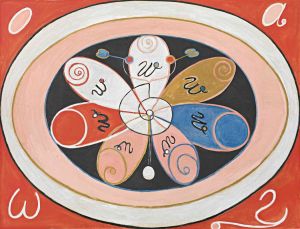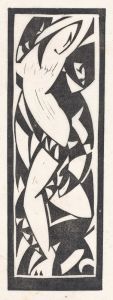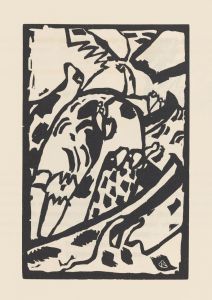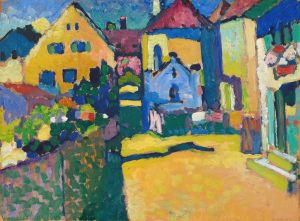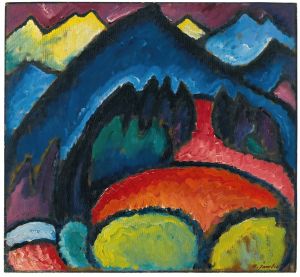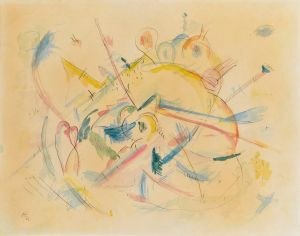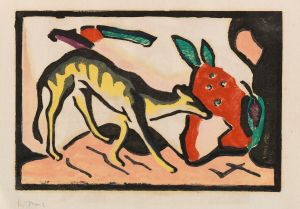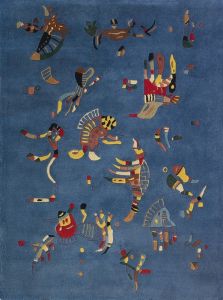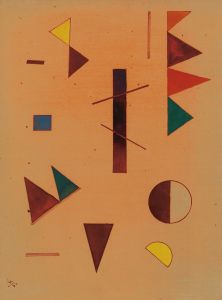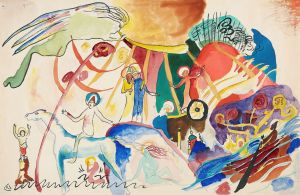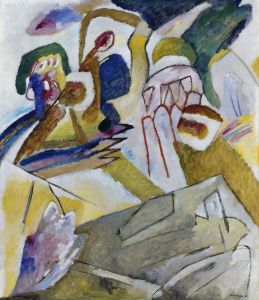
Klänge Pl.04
A hand-painted replica of Wassily Kandinsky’s masterpiece Klänge Pl.04, meticulously crafted by professional artists to capture the true essence of the original. Each piece is created with museum-quality canvas and rare mineral pigments, carefully painted by experienced artists with delicate brushstrokes and rich, layered colors to perfectly recreate the texture of the original artwork. Unlike machine-printed reproductions, this hand-painted version brings the painting to life, infused with the artist’s emotions and skill in every stroke. Whether for personal collection or home decoration, it instantly elevates the artistic atmosphere of any space.
Wassily Kandinsky's Klänge Pl.04 is one of the woodcuts included in his seminal illustrated book Klänge (Sounds), which was first published in 1913. Klänge is a collection of prose poems and woodcut prints that exemplify Kandinsky's exploration of the relationship between visual art and music, as well as his transition from figurative to abstract art. The book is considered one of the key works of the Expressionist movement and a cornerstone of modernist art.
The woodcut Pl.04 is part of the 56 prints featured in Klänge. Kandinsky created these prints using the woodcut technique, which allowed for bold, simplified forms and a raw, expressive quality. The imagery in Pl.04, like many of the other prints in the series, reflects Kandinsky's interest in abstraction and his desire to evoke emotional and spiritual responses through non-representational forms. While the specific content of Pl.04 may vary in interpretation, it aligns with the themes of the book, which include a focus on inner experience, the subconscious, and the interplay between sound and vision.
Kandinsky was deeply influenced by music, particularly the works of composers like Arnold Schoenberg, and he sought to create a "synaesthetic" experience in his art, where visual elements could evoke sensations similar to those produced by music. The title Klänge itself underscores this connection, as it translates to "Sounds" in English. The woodcuts in the book, including Pl.04, are often described as visual equivalents of musical compositions, with their rhythmic patterns, dynamic contrasts, and emotive power.
Klänge was produced during a pivotal period in Kandinsky's career, as he was moving away from representational art and toward pure abstraction. This shift was influenced by his theoretical writings, particularly his 1911 treatise On the Spiritual in Art, in which he articulated his belief in the spiritual potential of abstract art. The woodcuts in Klänge serve as visual manifestations of these ideas, blending abstract forms with occasional figurative elements to create a unique and innovative body of work.
The original edition of Klänge was published by the Munich-based art group Der Blaue Reiter (The Blue Rider), which Kandinsky co-founded with Franz Marc. The group was dedicated to promoting avant-garde art and exploring the spiritual dimensions of artistic expression. Klänge is widely regarded as one of the most important publications associated with Der Blaue Reiter and a landmark in the history of modern art.
Due to the abstract nature of Kandinsky's work, the specific interpretation of Pl.04 may vary among viewers and scholars. However, its significance lies in its contribution to Kandinsky's broader artistic and theoretical project, as well as its role in the development of abstract art in the early 20th century.





